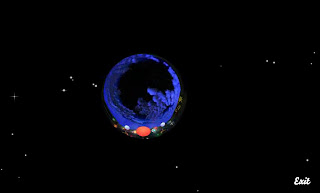National Coal Mining Museum
This site proved better than I expected. Most smaller type museums have inferior designs, or are just out of date.
Immediately the site attracts the user by having a large colour image in the center of the page to draw attention. Colour is important here too as the green, purple, blue and red although not neon in their hue still prove strong components on the page. The detail of using a roof effect atop the image/below the coloured menu links provides more visual interest, it catches the eye just that little bit more.
The sections on the front page also are quite important in maintaining the visitors attention. News/Events shows what is happening at the moment, being relavent to the user and showing the site isn't out of date. This is a good thing, as an untouched/unupdated site casts a bad shadow over the actual physical business. It definitely has an offputting feeling about when considering the service/company and how they are presenting themselves.
I really like how they have included a virtual tour applet... or at least initially I did. On clicking through to the relevant section, it brings up a map with various information dotted around.
Reference-wise, it does seem very much like a themepark map, and for youngsters, this could prove valuable as it will hopefully positively influence their perception somewhat of a museum visit.
As I said, the premise seemed great, but the implementation leaves something to be desired. Clicking on some of the marked dots simply brings up a new window with a green box and information:
Others bring up a window which loads interactive 3D revolving footage, where the user is allowed to pan left and right around the room.
The problem with it's implementation here is that they haven't really featured anything of interest. One room I clicked on appeared to be like a locker room and had handwritten notes around the walls, yet these were too small to even be able to read. The technology was a little over eager too and moved far too quickly. Notably however, the site does comment that this will be undergoing development.
I like how the site is coloured thematically for each section. Clicking on the green link from the homepage for the Visitor Zone launches that section with the green continued in the visual, also located in the same place.
One downside I do have to note however is that the menu on the left hand side, although initially detailed, on clicking, becomes even more so again using the colours for sectional links. However, these go unnoticed in light of the large images and geography of the navigation bar. The main content has you looking at the center, not the side, and so could be missed, initally.

If I were to make any changes to this site I would perhaps pay attention to their logo. Indeed, it isn't bad at all, yet, when looking at the colours used for the site, the logo does seem as if it came before and wasn't altered. The header bar with phone number and opening times nicely compliments the logo, sharing the same scheme. However, in comparison to the rest of the site, it could be made to tie in even more. Consistency, even in the most minute detail such as using a slightly different hue of green in the main content and the logo proves irksome to me as a designer. Naturally, most people won't ever notice this, but I believe in consistency, it aids an overall feel of quality design work.
One thing that is also noticeable with most museum type websites is that typefaces have to be quite straightforward and legible. These sites cater for a broad demograph so naturally need to be usable, and accessible. This facet of information does make the freedom of design seem somewhat restricted. Hopefully it will be manageable to achieve a compromise - both nice in terms of design, but also highly legible.
In all, I think this National Coal Mining museum site goes some way in achieving what is possible. The strong colours which form themes on the homepage are a clever design decision, drawing the eye and providing some form of subconcious awareness of location within the site.
I have learnt that consistency aids the overall perception of a site's quality, in addition to making things visible/noticeable being important. Information is presented in manageable chunks, and the most important information, such as opening times and contact numbers are ever present on the header, consistently available for the user to easily find.
@

































 ->
-> 











